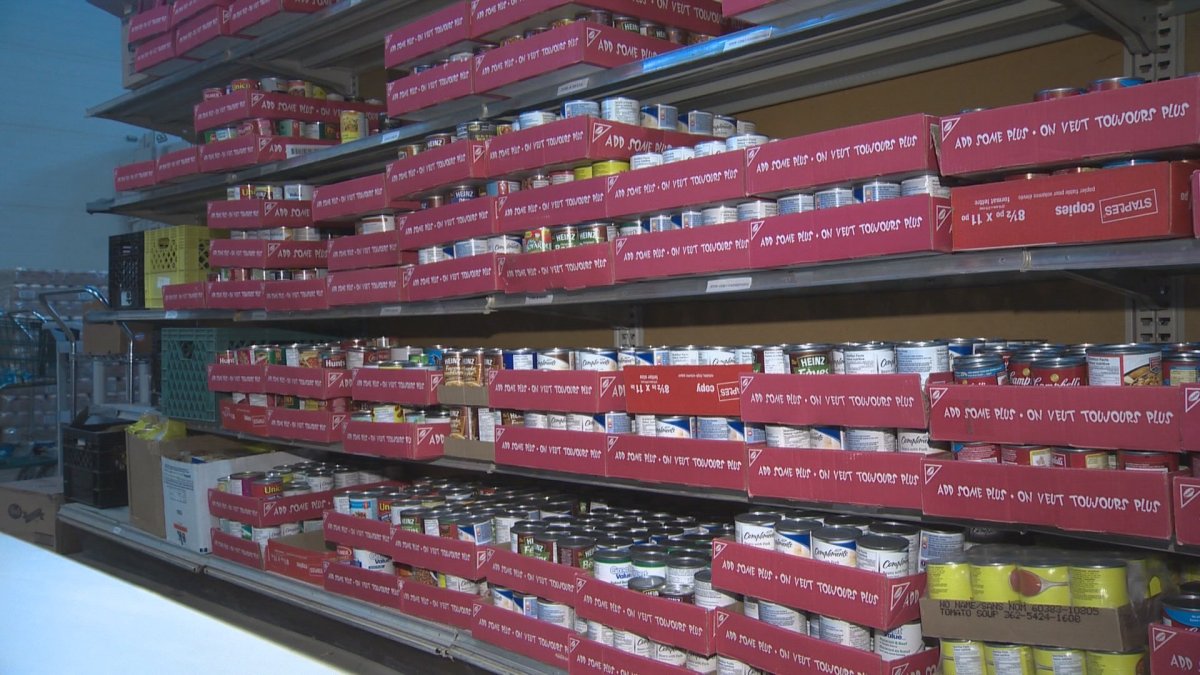LETHBRIDGE- Food banks across Canada provide an essential service to those fighting to keep food on the table, it’s no different in Lethbridge.

“A lot of people who use the food bank are working but they just don’t have enough money to buy groceries with what they make,” says Danielle McIntyre with Interfaith Food Bank.
Food Banks Canada released its national numbers, and there is little change.
Here in Lethbridge the usage is down by 12 percent, but the alarming number is that of users under 18 years of age.
Almost half of Interfaith Food Bank clients are kids.
| Food Banks Canada National Hunger Count Comparisons | Canada | Alberta | InterfaithMarch 2014 | Interfaith March 2013 | Interfaith March 2009 |
| People Served in March 2014 | 841,191 | 49,766 | 1435 | 1333 | 1304 (2009) |
| People Served in March 2013 | 833,098 | 48653 | 1333 | 1502 | 692 (2008) |
| Difference | 8093 | 1113 | 102 | -169 | 612 |
| Percent Change | 1% | 2.3% | 1% | -12% | 88% |
| Percentage of Children | 36.9% | 42.9% | 44% | 42% | 45% |
| Aboriginal Population | 13.6% | 42.2% | 29% | 28% | 12% |
| Seniors 65+ | 4.3% | 4.3% | 1.9% | 3% | 1% |
| Report Employment Income | 11.7% | 21.9% | 22% | 24% | 16% |
| Receive Employment Insurance | 4.4% | 6.5% | 2.3% | 3% | 5% |
| Receive Social Assistance | 47.8% | 32.2% | 27.8% | 28% | 46% |
| Receive Disability Supports | 17.5% | 15.5% | 22.6% | 20% | 18% |
“Parents are paying a lot for child care and for a roof over their head, sometimes that pay check just doesn’t go far enough and it makes more sense for one parent to stay home, but that means less income for things like groceries,” adds McIntyre.
So, how do we reduce the national and local number of food bank clients?
McIntyre says a few key factors are:
- Invest in affordable housing.
- Address extremely high levels of food insecurity in Canada’s North.
- Revolutionize provincial-territorial welfare programs.
- Provide more effective support to low income families with children.
- Help Canadians with low levels of literacy to upgrade their skills for the jobs of today.
On average, it’s recommended that 30 per cent of your income should go to housing, including your utilities.
Diane Randell with Social and Housing for the City of Lethbridge says that percentage is not the standard in Lethbridge, “When it comes to rent for low income earners, it’s more like 70 per cent to 80 per cent. That’s hard for anyone to pay in rent.”
- Trudeau tight-lipped on potential U.S. TikTok ban as key bill passes
- Canadian man dies during Texas Ironman event. His widow wants answers as to why
- Hundreds mourn 16-year-old Halifax homicide victim: ‘The youth are feeling it’
- On the ‘frontline’: Toronto-area residents hiring security firms to fight auto theft




Comments